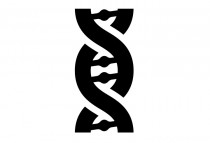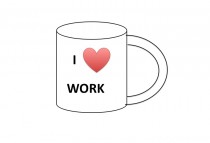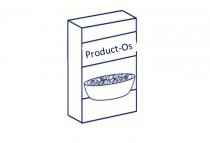Previously I wrote a post about changes to LinkedIn company pages. It occurred to me that we need to establish what components make up a company page before we can intelligently dissect how to best use them, especially as the changes vary across each section. I also wrote that I’d be reviewing Velocity’s page as I compile this blog series so I’ll point out anything I learn/change as I go. A company page has 6 elements available to the admin:
- Overview – what are you all about?
- Updates/activity – what are you sharing?
- Careers – what jobs do you have open* and who works there currently?
- Products – what do you sell?
- Follower Insights – what type of people are following you?
- Page Insights – what kind of traffic are you getting?
- Employee insights – demographics on your own employees – must be publicly listed as employees obviously
*THIS IS NOT FREE. But more on that later.

1. The first section (but now at the bottom of the page when you see it as a visitor) is where you say what is at the core of your business. The newest feature allows you to add imagery in a 646×220 pixel format. Because everyone has an image that size lying around, right?
For our page we decided to use a photo that shows our logo while demonstrating that design is something we really dig. I think it’s important that a company chooses an image that is relevant for any reason you can justify and post-rationalize. Please do not use the first thing you found in your digital asset manager that looked like it’d fit the size.
 2. Next we have updates. This can be an effective way to demonstrate how engaged you are in a changing marketplace, sharing insights, relevant news stories and applauding internal achievements. Please keep in mind these posts should not:
2. Next we have updates. This can be an effective way to demonstrate how engaged you are in a changing marketplace, sharing insights, relevant news stories and applauding internal achievements. Please keep in mind these posts should not:
- Steal intellectual property that is passed off as your own idea (ie – keep links to source
- Pull in verbatim every RSS feed you follow
- Only spin corporate messaging without any value to your customers
You can determine if a post is share-worthy simply: Does it add value or benefit my audience? If the answer is yes, ask yourself why or how and see if you can back up your answer as if you were defending the post to your manager. Still pass the test? Post it.

3. The Careers tab makes me a bit cross. With a name like Careers I expect it to advertise any open vacancies. But to cite my earlier point: THIS IS NOT FREE.
Why am I shouting this? You have to take ad space on your own page if you want to post a job vacancy. If you don’t pay for this feature then the Careers page lists all of your current employees, which should be called “People who work here” and not Careers.
It’s £125.95 for a 30 day posting on your page. That’s 50 grande hazelnut Americanos from Starbucks.
In their defence it’s a hot piece of real estate – a candidate is already on your page and therefore engaged with what you have to say. So it’s up to you/your recruitment budget if you buy an ad or Americanos for your marketing department.

4. The Products page is largely the same as before, only now it is featured on the right hand side as well as having its own dedicated page. Your descriptions should be pithy and concise as this is not a replacement of your corporate solutions page.
Imagine your products page is the back of a cereal box on the prospect’s breakfast table – what do you want to say in the 45 seconds you have their undivided attention? They’ve come this far but they can leave quicker than a very quick thing so say what you do and why they should trust you and link back to your site for more info.
At a glance it looks like the Velocity page is a bit short on content here but if I had to sum up the two things Velocity does best it is B2B content marketing and B2B demand generation. I’d love to say we were amazing horse whisperers as well to see how it made our traffic levels perform but that’s dishonest. And you should never be dishonest on your company page.

5,6,7. Insights as far as you can see. There many demographics available on who is following your company, as well as a separate tab for members that are already part of your organization. There is a separate set of demographics for people who visit your page but don’t follow you so you can see how this stacks up to your follower stats and note any key differences.
For instance, 27% of Velocity followers are from marketing companies whereas 41% of our traffic comes from employees of marketing companies. The biggest job role represented from of our visitors is sales (22%) but most of our followers are arts and design (19%). This is free data with segmentation on a level that Google Analytics can’t provide and that is awesome for you, the analytics-mad modern marketer and us, the analytics-mad marketing agency.
We’ll explore what you should do with each of these features and sections in a separate post as this concludes our anatomy lesson. And happily I think I’ve found some change for a grande hazelnut Americano in my desk.
Now that the series is complete, please browse our other LI series posts:
Post 1 reviews the changes to the new company pages from a marketing perspective
Post 3 covers other social media platforms and how they stack up for B2B
Post 4 will give you some tips on how you can optimise your page for results
Follow our Velocity page on LI to see if we’re staying honest and following our own advice.

Enjoyed this article?
Take part in the discussion







Comments
Jeff Moro October 10th, 2012
This was great! I have been looking for a resource on this for a while now and this is easily the best one I have found. Thanks so much!
Jessie Tracy October 11th, 2012
Thanks Jeff, glad it was useful. Am planning the next in the series on using each section and getting the most out of it as this post stops short of that critical next step. Hoping to have something new up next week!
Becca October 17th, 2012
I am hundred percent agrees that the time invested on LinkedIn for any company or business professionals will yield better or far more result than on other social media websites.
Ruth Webber October 19th, 2012
Very useful, as I’m considering benefits of company LinkedIn page just now. You have convinced me that it’s worthwhile and explained how to go about it in a clear ‘Velocity-like’ way. Can you explain heading ‘Recent Departures’ on Insights Page please?
Jessie Tracy October 19th, 2012
Thanks Ruth. As far as I can tell, “Recent Departures” are people who have recently left the company. When I looked at the profiles of the people who are featured here on the Velocity page it looks like they all left in 2010. I suspect they arbitrarily found some people to populate this section as it’s new. I hope that as the dust settles on it as a feature the section will naturally have genuinely recent leavers featured. Until then it is misleading and (as far as I can tell) something that is dynamic and unchangeable by the page admin.